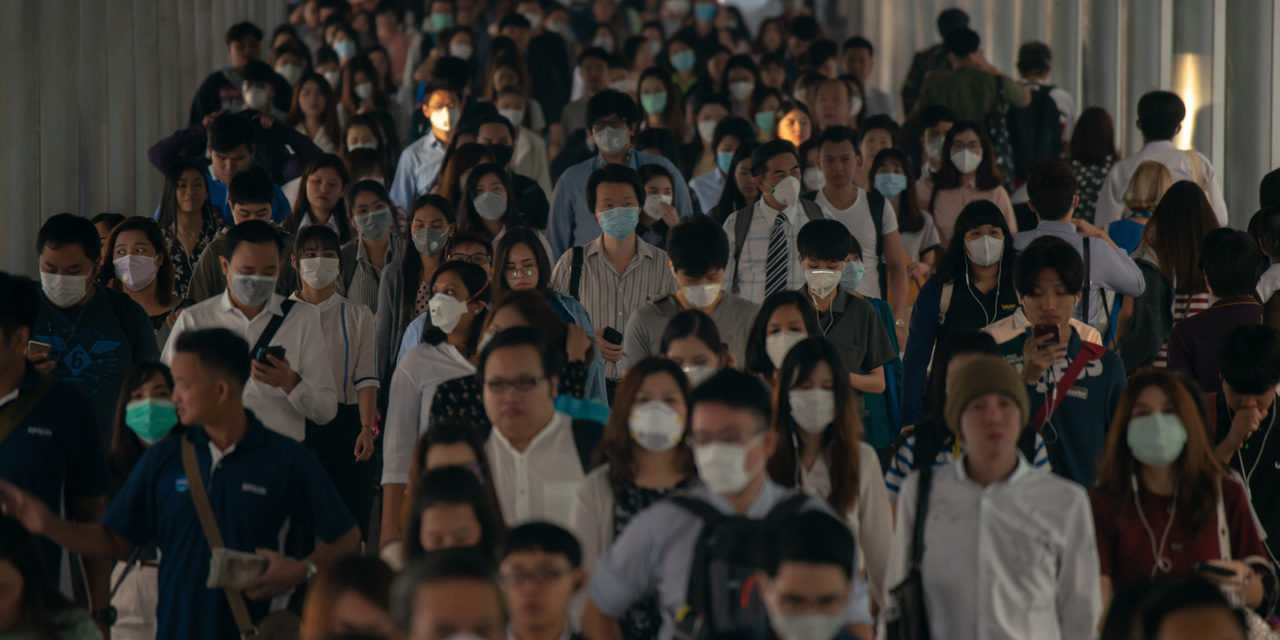The coronavirus outbreak is being portrayed by some as a moment of international crisis and likening it to the beginning of the movie Contagion, but others, like Matt Walsh, call the media an instigator of panic. The truth, as always, is probably somewhere in-between. Having worked a bit behind the scenes during the Ebola crisis, I’ve seen how the threat of a disease often is intensified by the media storm surrounding it.
In 2014, I was working at Samaritan’s Purse on the Ebola crisis response team, based here in the United States. While my work was mostly administrative, I learned a lot about outbreaks and how the media can cause people to panic unnecessarily. As Matt Walsh wrote in The Daily Wire, “It is rather a surprise to learn that we are all going to die from a viral pandemic, considering that we have all already died from swine flu, bird flu, SARS, and that one time when four people had Ebola.”
While Ebola is by far more deadly than the coronavirus, there was no real reason for the average American citizen to panic over Ebola (it may be incredible infectious but not all that contagious) and there isn’t much of a reason to panic over the coronavirus either. At least, not for right now.
For one, there has never been a virus that has come even close to wiping out the vast majority of the world’s population. The two closest would probably be the plague and Spanish Influenza.
Black Death, also known as bubonic plague, wiped out an estimated third of Europe’s population in the 1300s (though some estimates are higher) and millions of people in Asia. While the stories about that time are horrific, we have one distinct advantage over our ancestors: advances in modern technology and an understanding of epidemiology.
In the 1300s, those who became infected with the plague tried many things like bloodletting and boil-lancing, which have been described as “crude and unsophisticated techniques” and were, obviously, ineffective. Nowadays, hardly anyone dies from the plague. The disease is still deadly, but with the right medical intervention people usually survive. The last plague death in the United States was in 2015, though roughly seven humans are infected every year.
The other global pandemic that people usually cite is the Spanish Influenza, which infected about 500 million people worldwide and killed an estimated 20 to 50 million. That’s a lot of people, but that was before a there were effective drugs or vaccines that could minimize the flu’s effect. Now, if someone gets the flu, they are tested to see what strain and given Tamiflu to combat the disease or something else. People still die, between 12,000-61,000 per year since 2010, but not by the millions.
Here’s the thing, while the coronavirus is still relatively unknown and still spreading rapidly, we do have the scientific and medical knowledge to respond quickly to this emerging threat. It is likely, perhaps in a year or two from now, that there will be some sort of treatment for coronavirus and the outbreak should be largely contained before then.
The decision by American and European based airlines to halt flights to China is an appropriate response, and the decision by the government to deny entry to any foreign national who has been to China in the last 14 days is also correct. At Samaritan’s Purse, all staff members who worked in the Ebola hot zones were quarantined for three weeks in order to ensure that they did not get sick or infect anyone else. They didn’t.
For the average American citizen, the likelihood of coming into contact with the coronavirus is currently low, according to the Centers for Disease Control and Prevention (CDC), but higher for medical professionals and frequent travelers who have either been to the infected regions or interacted with someone from those areas. The best way to combat the disease is to be aware of the symptoms and seek medical attention immediately if you feel you may have come in contact with someone who could be a carrier. Keep up with the CDC’s reports about the outbreak, and the United Nations World Health Organization situation reports as well. The Chinese have sequenced the genetic makeup of the virus, which will assist in finding a treatment, but the situation is still fairly fluid.
While the entire outbreak seems quite scary, the best thing that we can do as Christians is to pray not panic. Lift up the patients with the coronavirus and pray that their body will fight off this new disease. Pray also for the doctors, nurses and other medical personnel treating the patients—their risk of exposure is high. And finally, pray for all of the scientists and researchers who are working tirelessly at 15 laboratories across the world to get some sort of treatment and/or vaccine together.
International transportation can cause a disease to spread quickly and become uncontained, but we also have the ability to respond quickly and with medical knowledge that can save lives. The situation surrounding the coronavirus may seem frightening, but it seems more like the media is overplaying the outbreak.






